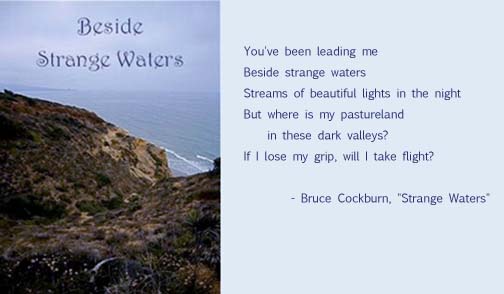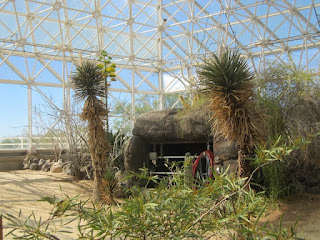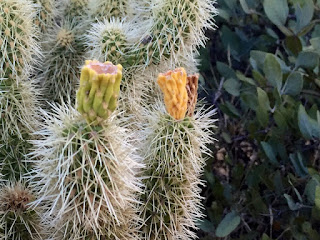 |
| Biosphere 2, Technosphere Hallway @2017 Tina Quinn Durham |
As soon as I stepped through the door into the tunnel, I immediately thought of H.G. Wells, and started looking for dangerous little humanoids that were clever with machines but might want to eat me.
None appeared, and our guide seemed well-fed enough for me to continue the tour, despite my misgivings.
For the engineers among us, a few facts:
The technosphere includes 26 air handlers that can control moisture and humidity as well as oxygen and C02 levels, and of course heat or cool the air as required.
Having so much control over temperature and humidity allows scientists to discover what happens if a rainforest experiences several weeks of drought. They cannot control the ocean, but at the coral reef in Biosphere 2, they can study corals respond to increased levels of CO2 or higher water temperatures.
Our guide told us about an interesting experiment in the rainforest. The biome was flooded with CO2, and it turns out that increased CO2 levels don’t lead to more and more plant growth. Instead, there is an upper limit to how much carbon that plants can absorb and sequester - and it is possible for Earth to go beyond that limit.
Not only that, but other studies have shown that increased levels of carbon dioxide can actually reduce the nutrient value of important crops like rice and wheat.
Scary, huh?
"Biosphere 2 Gives Up Some of its Secrets" - an informative article about the technosphere from The Green Valley News.
Fast Facts - Biosphere 2.
More Carbon Dioxide in the Air Makes Some Crops Less Nutritious























